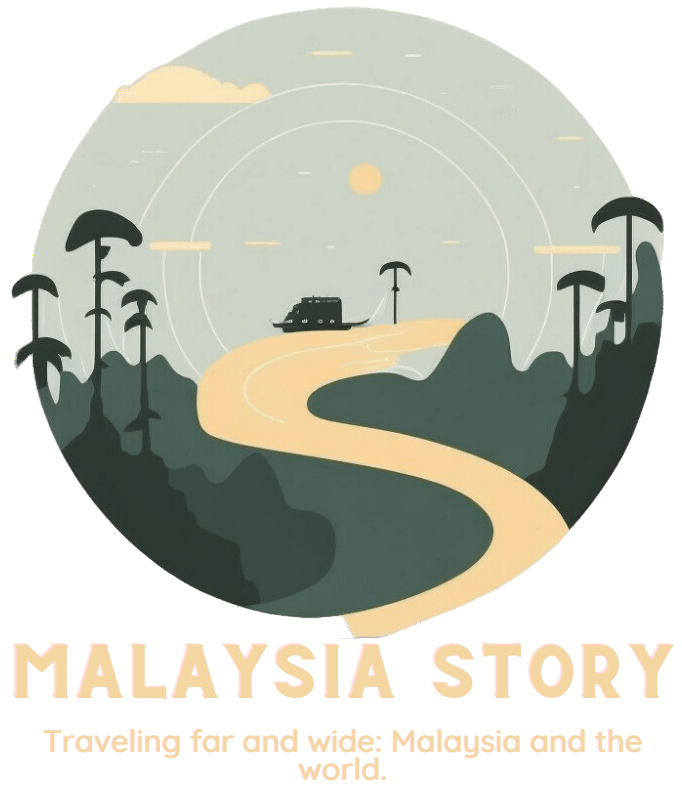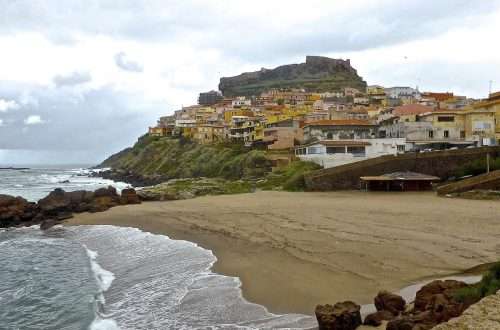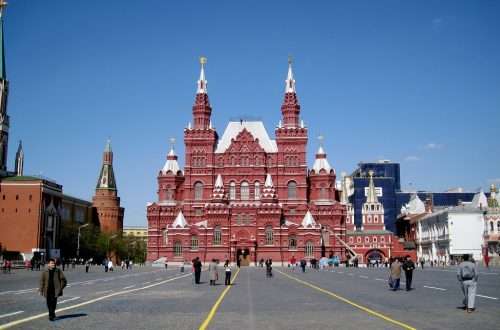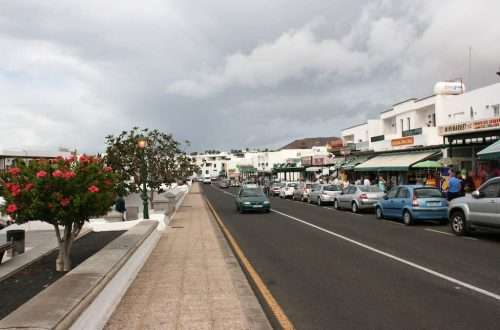
Top 15 Tourist Attractions in Peru: Unveiling a Land of Wonders
Welcome to Peru, a land where history whispers from ancient stones and vast landscapes stretch as far as the eye can see. This is a place where cultures collide, traditions thrive, and nature’s wonders are on full display. Imagine wandering through ruins that echo the prowess of ancient civilizations. Or gazing upon mountains that touch the sky, their peaks shrouded in mystery and majesty. Peru is not just a destination; it’s an experience, a journey through time and nature.
This country offers an array of breathtaking tourist attractions. From the mystical Machu Picchu, standing as a testament to the Incan empire, to the enigmatic Nazca Lines, whose origins and meanings continue to puzzle scholars. Venture into the Amazon Rainforest, one of the most biodiverse regions on Earth, or explore the vast expanse of Lake Titicaca, a body of water steeped in myth and legend. Peru’s attractions range from the ancient to the natural, each with its own unique story and allure.
Whether you’re an adventurer seeking thrills in the Andes, a historian eager to uncover the secrets of ancient ruins, or a nature lover looking to immerse yourself in unparalleled biodiversity, Peru has something to offer. So, let’s embark on a journey to unveil the top 15 tourist attractions in Peru, where every corner holds a new discovery and every moment is an invitation to wonder and awe. Join us as we explore a land of wonders, where the past and present coalesce, creating unforgettable experiences.
Top 15 Tourist Attractions in Peru
Peru is a treasure trove of ancient history, breathtaking landscapes, and rich cultural heritage. Among its most renowned attractions are Machu Picchu, the Sacred Valley of the Incas, and Lake Titicaca. Each of these destinations offers a unique glimpse into Peru’s past and present, providing visitors with unforgettable experiences.
Machu Picchu (Machu Picchu Sanctuary)

Machu Picchu stands as the crown jewel of Peru. This iconic Inca citadel is nestled high in the Andes mountains, offering breathtaking views that leave every visitor in awe. Its historical significance is profound, as it is believed to have been constructed in the 15th century as a royal estate or religious site. The mystery surrounding its construction, particularly how the Incas transported massive stones to the site without the wheel, adds to its allure.
Visitors are captivated by Machu Picchu’s unique architecture, including its intricate stone buildings and terraces that blend seamlessly with the natural landscape. The site is a testament to the ingenuity and skill of the Inca civilization.
The Sacred Valley of the Incas
The Sacred Valley, located near Cusco, is a region of immense natural beauty and historical importance. It was a key area for the Incas, thanks to its fertile lands and strategic location. Today, the valley is dotted with numerous Inca ruins, agricultural terraces, and charming villages that offer a glimpse into the past and present of Andean life.
Key attractions within the Sacred Valley include:
- Pisac: Known for its impressive Inca ruins and vibrant market.
- Ollantaytambo: Home to some of the most well-preserved Inca architecture and a living Inca town.
- Chinchero: A picturesque village with a rich cultural heritage, known for its traditional textiles.
Exploring the Sacred Valley provides insight into the advanced agricultural techniques of the Incas and their deep connection to the land.
Lake Titicaca

Lake Titicaca is not only the world’s highest navigable lake but also a place of immense cultural significance for the indigenous communities living on its shores. Situated at an elevation of 3,812 meters (12,507 feet) above sea level, the lake is known for its crystal-clear waters and the unique floating islands made of reeds by the Uros people.
Visitors to Lake Titicaca can explore the lake by boat, visiting various islands and communities to learn about their traditions and way of life. The floating islands are a particular highlight, showcasing the ingenuity of the Uros people in creating habitable spaces in such a challenging environment.
Nazca Lines
The Nazca Lines are a series of ancient geoglyphs located in the Nazca Desert of southern Peru. These enormous etchings depict a variety of animals, geometric shapes, and human figures, stretching across the desert floor. The creation and purpose of the Nazca Lines remain a topic of fascination and speculation among historians and archaeologists. Theories range from astronomical calendars to religious practices, yet their true purpose remains a mystery.
Viewing the Nazca Lines is an experience like no other. The most popular way to see these enigmatic designs is by taking a small plane flight, which offers a breathtaking aerial perspective. For those who prefer to stay on the ground, several viewpoints and observation towers provide a glimpse of the lines.
Cusco (Cuzco)
Cusco, once the heart of the Inca Empire, is a city that captivates with its blend of Inca ruins, colonial architecture, and vibrant culture. The city’s historical significance is immense, serving as a testament to the advanced civilization of the Incas and their eventual conquest by the Spanish. The transformation of Cusco during the Spanish conquest brought about a unique fusion of Incan and colonial architecture, evident throughout the city.
Key attractions in Cusco include:
- Plaza de Armas: The central square surrounded by historical buildings, including the Cathedral of Cusco.
- Qorikancha Temple: An Inca temple over which the Santo Domingo church was built, showcasing the blend of Incan and Spanish architecture.
- Sacsayhuaman: An impressive Inca fortress with large stone walls, located on the outskirts of the city.
Exploring Cusco offers insight into the rich history and culture of the Inca civilization and the impact of Spanish colonialism.
Arequipa (The White City)
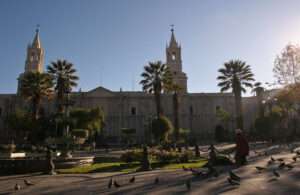
Arequipa, known as “The White City,” is renowned for its stunning architecture made from sillar, a white volcanic rock. This beautiful city served as a major colonial center and continues to enchant visitors with its well-preserved historical buildings and vibrant cultural scene. The main square, Plaza de Armas, is a highlight, featuring the impressive Cathedral of Arequipa and its intricate facade.
Notable attractions in Arequipa include:
- Santa Catalina Monastery: A sprawling complex that offers a glimpse into the lives of nuns in the 16th century, with beautifully preserved colonial architecture and religious art.
- Cathedral of Arequipa: Known for its grandeur and detailed facade, the cathedral dominates the Plaza de Armas.
Visiting Arequipa provides a deeper understanding of Peru’s colonial history and architectural beauty.
Colca Canyon
Colca Canyon, renowned as the second deepest canyon in the world, presents breathtaking landscapes and dramatic viewpoints. This majestic natural wonder is also one of the best places to spot the Andean Condor, one of the largest flying birds. The sight of these magnificent birds soaring against the backdrop of the canyon is truly unforgettable.
Options for exploring Colca Canyon include:
- Hiking Trails: Various trails cater to all levels of hikers, offering stunning views of the canyon and surrounding landscapes.
- Cruz del Condor (Condor’s Cross): A popular viewpoint where visitors can witness Andean Condors in flight.
- Traditional Villages: Nestled within the canyon, these villages offer a glimpse into the local culture and traditions.
Amazon Rainforest
The Amazon Rainforest, the world’s largest tropical rainforest, is a haven of biodiversity. Home to a staggering variety of plant and animal life, it also shelters indigenous communities with unique cultures and traditions. Exploring this vast green expanse is a must-do for anyone visiting Peru.
Options for exploring the Amazon Rainforest include:
- Boat Tours: Navigate the mighty Amazon River and its tributaries to witness the rainforest from a unique perspective.
- Jungle Lodges: Stay in the heart of the rainforest, offering wildlife viewing experiences and nature walks.
- Cultural Experiences: Learn about the traditional ways of life from the indigenous communities that call the rainforest home.
Paracas National Reserve

The Paracas National Reserve is a stunning coastal area known for its rich biodiversity, including sea lions, penguins, dolphins, and humpback whales during certain seasons. The reserve’s unique landscapes, where the desert meets the ocean, create a breathtaking scenery that is unlike any other.
Opportunities within the Paracas National Reserve include:
- Wildlife Watching Boat Tours: Explore the waters around the reserve to see its diverse marine life up close.
- The Paracas Candelabra: A visit to this giant geoglyph etched into the hillside is a must for history and mystery lovers.
- Pristine Beaches: The reserve’s beaches are perfect for those looking to relax and soak up the sun in a beautiful natural setting.
Ballestas Islands
Often referred to as the “poor man’s Galapagos,” the Ballestas Islands provide a haven for an impressive variety of wildlife without the need to travel far from the mainland. Situated off the southern coast of Peru, these islands are accessible by boat tours, which offer close encounters with:
- Sea lions basking on the rocks
- Humboldt penguins waddling along the shore
- Guano birds nesting in the cliffs
These boat tours not only allow for wildlife spotting but also offer insights into the islands’ ecology and importance for bird conservation.
Chan Chan (Chimú Empire Capital)
Chan Chan stands as a monumental testament to the architectural ingenuity of the Chimú Empire. As the largest adobe city in the Americas, it showcases the empire’s power and organizational skills through its:
- Well-preserved city walls
- Intricate compounds
- Impressive temples
Exploring Chan Chan offers a deep dive into the history of the Chimú civilization, revealing the sophistication and complexity of their urban planning and construction techniques.
Huayna Picchu
For those seeking adventure, Huayna Picchu offers a challenging hike with a significant payoff. The mountain that towers over Machu Picchu provides:
- Breathtaking panoramic views of the ancient Inca citadel
- A glimpse into the past with its terraces and structures, believed to have served as a religious retreat for Inca elites
The hike is not for the faint-hearted, but it rewards those who undertake it with unparalleled views and a deeper connection to the mystical landscape of Machu Picchu.
Salkantay Trek
The Salkantay Trek presents an exhilarating alternative route to the iconic Machu Picchu. Renowned for its breathtaking scenery, this trek takes you through a wide range of ecosystems, from majestic snow-capped mountains and imposing glaciers to lush cloud forests teeming with life. Its unique path allows trekkers to experience:
- A variety of landscapes not seen on the more frequented Inca Trail
- Potentially fewer crowds, offering a more intimate connection with nature
- An opportunity to witness the diverse flora and fauna of the Peruvian Andes
The Salkantay Trek is an adventure that challenges and rewards, providing an unforgettable journey through the heart of the ancient Inca lands.
Mancora Beach
For those who prefer the sound of waves to the rustle of leaves, Mancora Beach is a paradise found on Peru’s northern coast. This surfing hotspot is celebrated for:
- Beautiful sandy beaches and a laid-back atmosphere
- Consistent waves suitable for surfers of all levels, from beginners to experts
- Surf camps and schools that offer lessons and equipment rentals
- Additional water sports activities, such as kitesurfing and stand-up paddleboarding
Mancora Beach is the perfect getaway for travelers looking to ride the waves, soak up the sun, and enjoy the relaxed vibes of Peru’s coastal lifestyle.
Planning Your Trip to Peru
Embarking on a trip to Peru requires thoughtful planning to make the most of your visit. Consider the following factors to ensure a smooth journey:
- Best Time to Visit: Peru’s diverse climates mean the best time to visit can vary. Research your chosen destinations to find the optimal season for your activities.
- Transportation Options: Peru offers a range of transportation methods, from domestic flights connecting major cities to buses and trains for more scenic routes.
- Visa Requirements: Check the latest visa requirements and entry guidelines for your nationality.
- Resources for Travelers: Official tourism websites and travel blogs are invaluable resources for up-to-date information and insider tips. Websites such as Peru’s official tourism site (www.peru.travel) and reputable travel blogs can offer guidance on accommodations, attractions, and travel advice.
Conclusion
Peru is a treasure trove of experiences waiting to be discovered. Its diverse landscapes serve as the backdrop for a rich tapestry of cultural and historical sites. From the ancient ruins of Machu Picchu and the mysterious lines of Nazca to the vibrant cities and the serene beauty of its coastline, Peru offers something for everyone. The country invites travelers to explore its hidden wonders, immerse themselves in its deep history, and revel in its natural beauty. Whether you’re an avid hiker, history buff, or just in search of some peace and tranquility, Peru promises an unforgettable journey.
FAQ
What is the best time to visit Peru?
The best time to visit Peru largely depends on the regions you plan to explore. The dry season from May to September is ideal for hiking in the Andes and visiting Machu Picchu, as you’ll enjoy clearer skies and milder weather. However, this period also corresponds with the high tourist season, so expect larger crowds and higher prices.
Is Peru safe for tourists?
Peru is generally safe for tourists, but like any travel destination, it’s important to take precautions. Stick to well-trodden tourist paths, be cautious of your belongings in crowded places, and avoid walking alone at night in less frequented areas. Always keep informed about the local safety conditions in the areas you plan to visit.
What currency is used in Peru?
The Peruvian Sol (PEN) is the official currency of Peru. Money exchange options are widely available in cities and tourist areas, but it’s advisable to carry some local currency for smaller towns and rural areas. Credit cards are accepted in many places, but having cash on hand is useful for smaller purchases.
What language is spoken in Peru?
Spanish is the primary language spoken in Peru, serving as the lingua franca in cities and most of the country. However, Peru is a multilingual nation, with various indigenous languages also spoken, particularly in rural areas. Quechua and Aymara are among the most prominent indigenous languages.
What are some essential things to pack for a trip to Peru?
Packing for Peru means preparing for a variety of climates and activities. Essential items include:
- Sunscreen: High UV levels, especially in the highlands, make sunscreen a must.
- Comfortable shoes: For hiking and exploring the diverse terrain.
- Warm clothes: Nights can be chilly, especially in the Andes.
- Lightweight rain jacket: Useful for sudden downpours in the rainforest and other areas.
Peru’s majestic landscapes, rich history, and vibrant culture offer an enriching experience for every traveler. With a bit of planning and an adventurous spirit, a trip to Peru can be an unforgettable adventure into the heart of South America.


